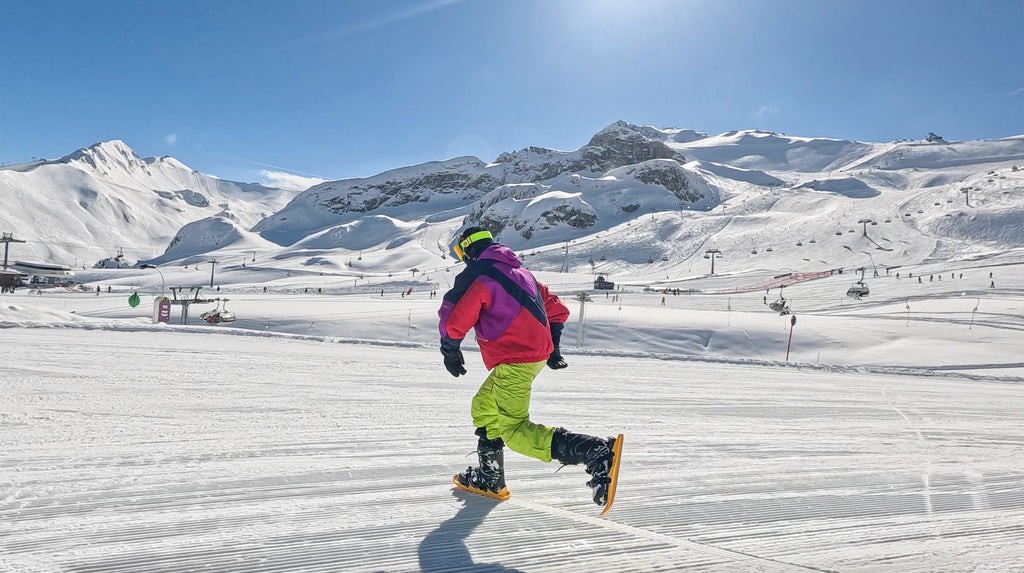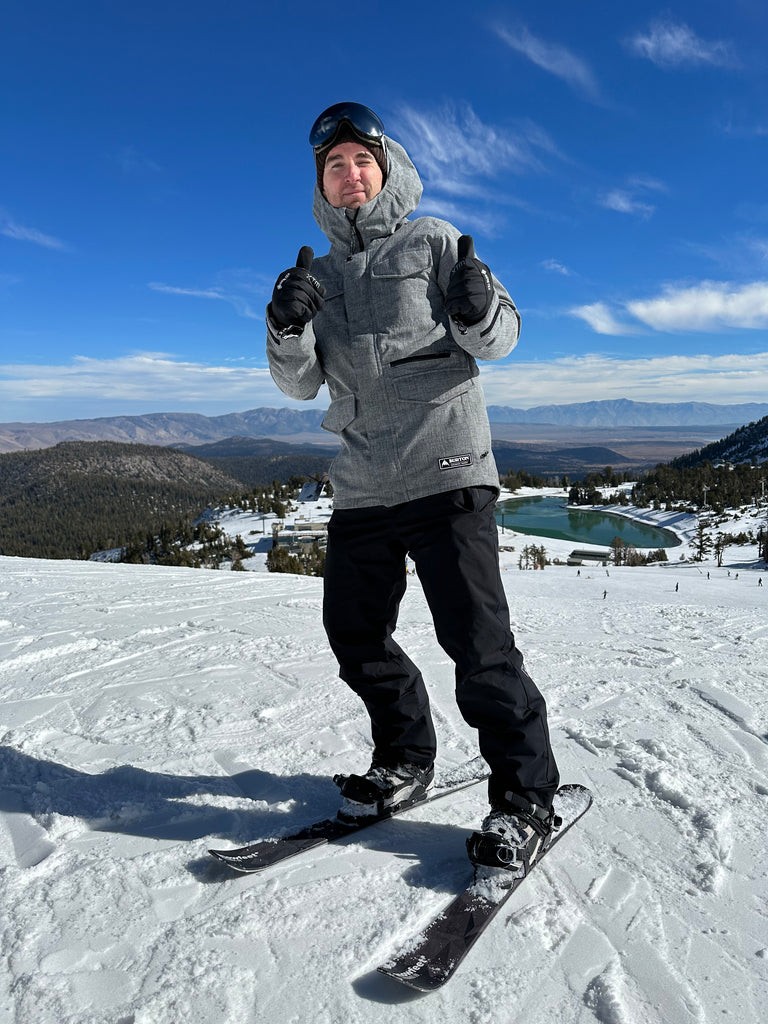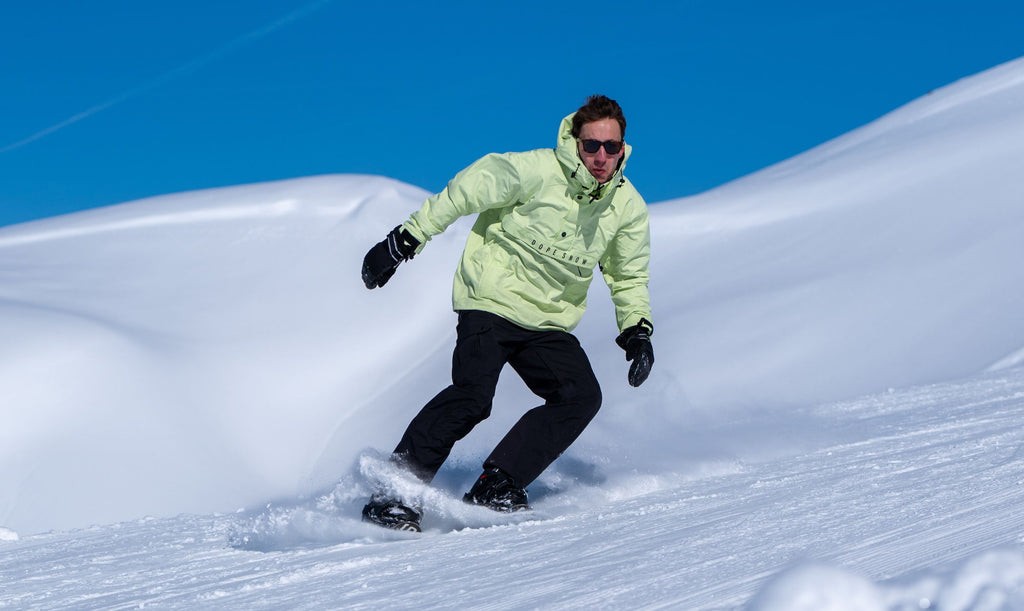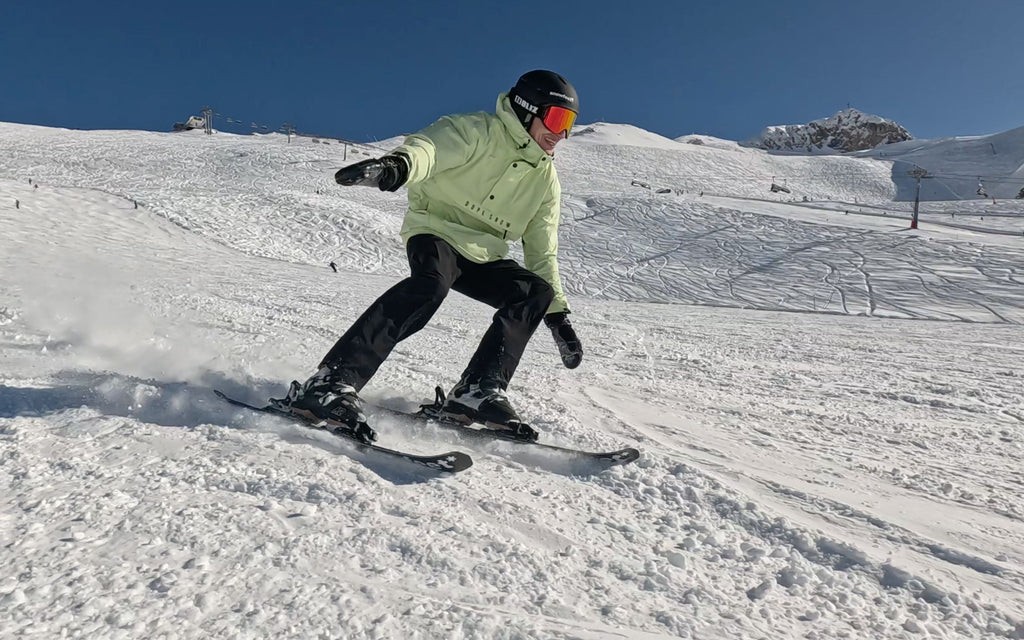Are Shorter Skis Easier To Learn On? Yes, shorter skis generally offer beginners enhanced control, maneuverability, and balance, streamlining the learning curve. At LEARNS.EDU.VN, we understand that mastering the slopes requires the right equipment and techniques. Discover how shorter skis can accelerate your skill development, reduce physical strain, and boost your confidence on the mountain. Enhance your skiing experience with these simple tools, beginner-friendly skis, and easy learning tips.
1. Understanding Short Skis: An Overview
Short skis, also known as skiboards, snowblades, or mini skis, typically measure 120 cm or less. Although often associated with beginners, their applications extend beyond introductory use. These skis provide a unique skiing experience, differing significantly from longer traditional skis.
1.1. Types of Short Skis Explained
The term “short skis” covers a range from 44 to 120 cm. The experience on the slopes changes noticeably with length, therefore, it’s useful to categorize them.
- Skiskates (Snowfeet): Measuring no more than 50 cm, skiskates offer a skating-like experience on snow, suitable for those with a background in ice skating or hockey.
- Skiboards (Snowblades/Skiblades): These short skis range from 65 cm to 120 cm and offer various skiing experiences depending on their length.
1.2. Skiskates: Skates for Snow
Skiskates, also called Snowfeet, are compact skis no longer than 50 cm. While not always ideal for first-time skiers due to balance differences, they can be an excellent choice for those with skating backgrounds.
- Snowfeet: These attach to winter hiking boots and are made from fiberglass-reinforced materials. They’re ideal for winter excursions, easily fitting into a backpack.
- Skiskates: These are the world’s smallest skis, measuring just 44 cm, attaching to ski or snowboard boots. They perform best on groomed slopes or in snow parks.
1.3. Skiboards: Snowblades and Skiblades
Skiboards, including snowblades and skiblades, provide an experience closer to traditional skiing than skiskates. Available in various lengths, each offering a distinct feel.
- 65 cm Skiboards: These blend snow skating and skiing, often enjoyed by ski instructors, freestyle skiers, and children.
- 99 cm Skiboards: A popular choice, these offer maneuverability and support, suitable for carving, snow park activities, and all-mountain skiing.
- 120 cm Skiboards: The longest in the short ski category, these appeal to those wanting lighter, manageable skis without sacrificing balance.
2. Advantages of Using Short Skis for Beginners
Short skis provide several advantages that make learning to ski more accessible and enjoyable for beginners. These include ease of control, enhanced balance, reduced physical effort, and more accessible turning techniques.
2.1. Easier Control and Maneuverability
Shorter skis are lighter and easier to handle, allowing for quicker and more precise turns. According to a study by the Professional Ski Instructors of America (PSIA), beginners using shorter skis often feel more in control, boosting their confidence and accelerating learning. This enhanced control is crucial for developing basic skills and feeling comfortable on the slopes.
2.2. Enhanced Balance and Stability
Short skis improve balance, making it easier for skiers to maintain their center of gravity. A study published in the Journal of Sports Science & Medicine found that shorter skis provide increased stability, reducing the risk of falls and injuries, which is vital for a positive learning experience. Improved balance helps beginners build confidence and progress more quickly.
2.3. Reduced Physical Effort
The reduced weight of shorter skis translates to less physical effort required to move and steer. This is particularly beneficial for beginners who may lack the muscle strength and endurance for longer skis. According to research from the University of Utah’s Ski Lab, reduced fatigue allows beginners to spend more time practicing and enjoying their time on the slopes.
2.4. Simplified Turning Techniques
Turning is a fundamental skill in skiing, and short skis simplify the learning process. Their design allows for shorter, sharper turns that are easier to execute compared to the broad, sweeping turns required by longer skis. This makes it easier for beginners to learn and apply basic turning techniques effectively.
2.5. Versatility in Various Conditions
While longer skis excel in specific conditions like racing or deep powder, shorter skis are more adaptable to different terrains and snow conditions. This versatility makes them ideal for beginners learning in varied environments. According to a survey by Snowsports Industries America (SIA), beginners appreciate the flexibility of shorter skis as they explore different slopes and conditions.
3. Specific Types of Short Skis and Their Benefits for Beginners
Different lengths and styles of short skis cater to varying preferences and skill levels. Understanding the specific benefits of each type helps beginners choose the right equipment for their needs.
3.1. Skiskates (44-50 cm)
Skiskates provide a unique skating-like experience on snow, making them ideal for those with a background in ice skating or hockey. Their short length allows for quick, agile movements, enhancing control and maneuverability.
- Benefits:
- Enhances agility and control
- Ideal for ice skaters and hockey players
- Lightweight and easy to carry
- Limitations:
- Requires a different balance than traditional skis
- Best suited for groomed slopes or snow parks
3.2. 65 cm Skiboards
These skiboards offer a blend of snow skating and skiing, suitable for freestyle skiers, ski instructors, and children. Their shorter length enhances freedom of movement, making them easier to handle and control.
- Benefits:
- Suitable for freestyle and trick skiing
- Ideal for children and ski instructors
- Offers a unique blend of skiing and skating
- Limitations:
- May require adjustments for traditional skiers
- Less stable than longer skiboards
3.3. 99 cm Skiboards
A popular choice for beginners, 99 cm skiboards provide a balance of maneuverability and stability. They are excellent for carving and all-mountain skiing, making them a versatile option for learning basic techniques.
- Benefits:
- Provides a balance of maneuverability and stability
- Excellent for carving and all-mountain skiing
- Versatile for different terrains and conditions
- Limitations:
- May not perform as well in deep powder
- Requires more effort than shorter skiskates
3.4. 120 cm Skiboards
The longest in the short ski category, 120 cm skiboards appeal to those seeking lighter, manageable skis without sacrificing balance. They are perfect for carving and offer more stability at higher speeds.
- Benefits:
- Offers stability at higher speeds
- Perfect for carving
- Provides a lighter, more manageable feel
- Limitations:
- Less maneuverable than shorter skiboards
- May not be as versatile in tight spaces
4. How to Choose the Right Length of Skis for Your Skill Level
Selecting the right ski length depends on several factors, including skill level, height, weight, and skiing style. Understanding these factors will help beginners make an informed decision and choose skis that support their learning progress.
4.1. Factors to Consider
- Skill Level: Beginners typically benefit from shorter skis, which offer greater control and maneuverability. As skills improve, skiers may transition to longer skis for more stability and speed.
- Height and Weight: Generally, taller and heavier skiers require longer skis for better stability and support. Shorter skis are more suitable for shorter and lighter individuals.
- Skiing Style: Different skiing styles, such as carving, freestyle, or all-mountain skiing, may require different ski lengths. Beginners should focus on versatile skis that allow them to explore various styles.
4.2. General Guidelines for Ski Length
| Skill Level | Height (ft) | Weight (lbs) | Recommended Ski Length (cm) |
|---|---|---|---|
| Beginner | 4’10”-5’2″ | 90-120 | 65-99 |
| Beginner | 5’3″-5’6″ | 120-150 | 99-110 |
| Beginner | 5’7″-5’10” | 150-180 | 110-120 |
| Beginner | 5’11”-6’2″ | 180-210 | 120+ |




4.3. Expert Recommendations
Consulting with ski experts or instructors can provide personalized recommendations based on individual needs and goals. Ski shops often offer fitting services to help beginners find the right ski length and type.
5. Dispelling Myths About Short Skis
Several misconceptions surround short skis, often discouraging beginners from considering them. Addressing these myths can help potential skiers make informed decisions and embrace the benefits of shorter skis.
5.1. Myth: Short Skis Are Only for Beginners
While short skis are excellent for beginners, they also appeal to experienced skiers seeking agility and versatility. Many advanced skiers use skiboards in snow parks or for freestyle skiing.
5.2. Myth: Short Skis Are Too Slow
Short skis can achieve high speeds, especially when used on groomed slopes. While longer skis may be faster in certain conditions, the agility of shorter skis allows for quicker turns and a more dynamic experience.
5.3. Myth: Short Skis Lack Stability
Modern short skis are designed with enhanced stability features, providing ample support for beginners and advanced skiers alike. Techniques such as a wider stance and proper weight distribution can further enhance stability.
5.4. Myth: Short Skis Are Not Suitable for All Terrain
Short skis are versatile and can be used on various terrains, including groomed slopes, snow parks, and even some off-piste conditions. While longer skis may be preferred for deep powder, shorter skis offer a fun and challenging experience in diverse environments.
6. Integrating Short Skis into Your Learning Process
Effectively integrating short skis into your learning process involves combining the right equipment with proper techniques and instruction. Following a structured approach will help beginners maximize their progress and enjoyment.
6.1. Start with Professional Instruction
Taking lessons from a certified ski instructor is crucial for learning proper techniques and avoiding bad habits. Instructors can provide personalized guidance and help beginners build a solid foundation of skills.
6.2. Focus on Basic Techniques
Mastering basic techniques such as balance, stance, and turning is essential for progressing in skiing. Short skis can simplify these techniques, allowing beginners to focus on developing fundamental skills.
6.3. Practice Regularly
Consistent practice is key to improving skiing skills. Regular sessions on the slopes will help beginners build muscle memory and confidence.
6.4. Incorporate Drills and Exercises
Drills and exercises can help beginners refine their techniques and address specific areas for improvement. Examples include:
- Balancing Drills: Practicing balancing on one ski to improve stability.
- Turning Drills: Focusing on making smooth, controlled turns.
- Stopping Drills: Practicing different stopping techniques for various situations.
6.5. Gradually Increase Difficulty
As skills improve, gradually increase the difficulty of the terrain and challenges. This will help beginners build confidence and expand their abilities.
7. Essential Gear and Accessories for Beginner Skiers
In addition to skis, several essential gear and accessories can enhance the learning experience and ensure safety on the slopes.
7.1. Ski Boots
Properly fitted ski boots are crucial for comfort and control. Beginners should choose boots that provide a snug fit without being too tight.
7.2. Ski Bindings
Ski bindings attach the boots to the skis and are designed to release in case of a fall. Ensure that bindings are properly adjusted by a qualified technician.
7.3. Helmet
A helmet is essential for protecting the head in case of a fall. Choose a helmet that fits properly and meets safety standards.
7.4. Goggles
Goggles protect the eyes from the sun, wind, and snow. Choose goggles with UV protection and anti-fog coating.
7.5. Gloves or Mittens
Gloves or mittens keep hands warm and dry. Choose waterproof and insulated options for optimal comfort.
7.6. Appropriate Clothing
Dress in layers to stay warm and dry. Choose waterproof and breathable outer layers, such as a ski jacket and pants.
8. Comparing Short Skis to Long Skis: Which Is Right for You?
Understanding the differences between short and long skis can help beginners determine which type is best suited for their needs and goals.
8.1. Key Differences
| Feature | Short Skis | Long Skis |
|---|---|---|
| Length | Typically 120 cm or less | Typically 150 cm or more |
| Maneuverability | Higher agility and easier turns | Lower agility and broader turns |
| Stability | Lower stability at high speeds | Higher stability at high speeds |
| Versatility | Suitable for various terrains and conditions | Best for specific terrains and conditions |
| Learning Curve | Easier to learn basic techniques | Steeper learning curve for beginners |
| Physical Effort | Requires less physical effort | Requires more physical effort |
8.2. Pros and Cons
Short Skis:
- Pros:
- Easier to control and maneuver
- Lighter and requires less physical effort
- Simplifies learning basic techniques
- Cons:
- Lower stability at high speeds
- May not perform as well in deep powder
Long Skis:
- Pros:
- Higher stability at high speeds
- Better performance in specific conditions
- Suitable for advanced skiing techniques
- Cons:
- Harder to control and maneuver
- Heavier and requires more physical effort
- Steeper learning curve for beginners
8.3. Making the Decision
Beginners should consider their skill level, physical fitness, and goals when choosing between short and long skis. Short skis offer a more accessible and enjoyable learning experience for most beginners.
9. Safety Tips for Beginner Skiers
Safety should always be a top priority when skiing. Following these safety tips can help beginners minimize the risk of injuries and ensure a positive experience on the slopes.
9.1. Warm-Up Before Skiing
Warm-up exercises prepare the muscles for activity and reduce the risk of strains and injuries. Focus on stretching and light cardio exercises.
9.2. Stay Hydrated
Dehydration can lead to fatigue and decreased performance. Drink plenty of water throughout the day.
9.3. Know Your Limits
Avoid skiing on terrain that is beyond your skill level. Start with gentle slopes and gradually increase the difficulty as your skills improve.
9.4. Be Aware of Your Surroundings
Pay attention to other skiers and obstacles on the slopes. Maintain a safe distance and avoid collisions.
9.5. Follow Ski Area Rules
Obey all signs and regulations posted by the ski area. These rules are designed to ensure the safety of all skiers.
9.6. Take Breaks
Rest breaks can help prevent fatigue and maintain focus. Stop periodically to relax and rehydrate.
9.7. In Case of an Accident
If you witness or are involved in an accident, notify ski patrol immediately. Provide assistance to injured individuals and follow their instructions.
10. Maximizing Your Skiing Experience with LEARNS.EDU.VN
At LEARNS.EDU.VN, we are committed to providing resources and support to help you maximize your skiing experience. Whether you are a beginner or an advanced skier, our comprehensive guides and expert advice can help you improve your skills and confidence on the slopes.
10.1. Access to Expert Knowledge
Our website offers a wealth of articles, tutorials, and expert tips on skiing techniques, equipment selection, and safety guidelines. Learn from experienced skiers and instructors to enhance your knowledge and abilities.
10.2. Personalized Learning Paths
We offer personalized learning paths tailored to your skill level and goals. Follow our structured programs to progress from beginner to advanced skier.
10.3. Community Support
Connect with other skiers in our online community. Share experiences, ask questions, and receive support from fellow enthusiasts.
10.4. Continuous Improvement
Stay updated with the latest trends and techniques in skiing. Our website is regularly updated with new content and resources to help you stay ahead of the curve.
10.5. Call to Action
Ready to elevate your skiing experience? Visit LEARNS.EDU.VN today to explore our comprehensive resources and unlock your full potential on the slopes. For more information, contact us at 123 Education Way, Learnville, CA 90210, United States, Whatsapp: +1 555-555-1212, or visit our website at LEARNS.EDU.VN.
Frequently Asked Questions (FAQ)
1. Are shorter skis easier to learn on for adults?
Yes, shorter skis often make learning easier for adults by providing enhanced control and balance, reducing the physical effort required.
2. What is the ideal length for beginner skis?
For beginners, skis ranging from 65 to 120 cm are generally recommended, depending on height and weight.
3. Can I use short skis on all types of terrain?
Short skis are versatile and can be used on various terrains, although longer skis may be preferred for deep powder.
4. Do shorter skis go slower than longer skis?
No, short skis can achieve high speeds, and their agility allows for quicker turns and a more dynamic experience.
5. What are skiskates, and how do they differ from skiboards?
Skiskates are compact skis that provide a skating-like experience on snow, while skiboards offer a more traditional skiing feel.
6. How important is it to get professional instruction when learning to ski?
Professional instruction is crucial for learning proper techniques and avoiding bad habits.
7. What essential gear should I have as a beginner skier?
Essential gear includes ski boots, bindings, a helmet, goggles, gloves, and appropriate clothing.
8. How can I ensure my safety on the slopes?
Warm-up before skiing, stay hydrated, know your limits, be aware of your surroundings, and follow ski area rules.
9. What are the benefits of joining a ski community?
A ski community offers support, shared experiences, and opportunities to learn from fellow enthusiasts.
10. Where can I find more resources for improving my skiing skills?
Visit learns.edu.vn for comprehensive guides, expert tips, and personalized learning paths to enhance your skiing abilities.
